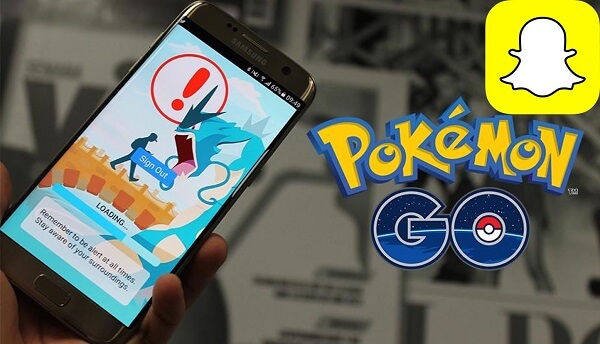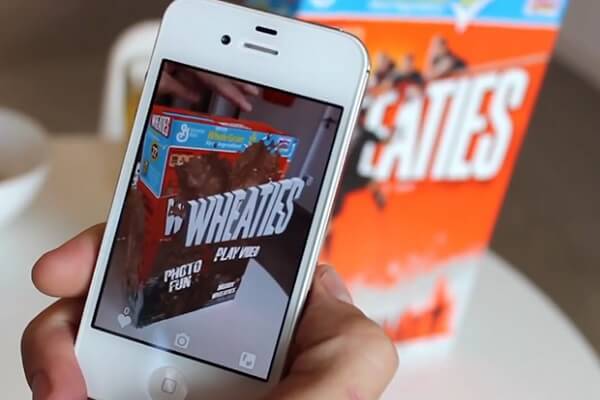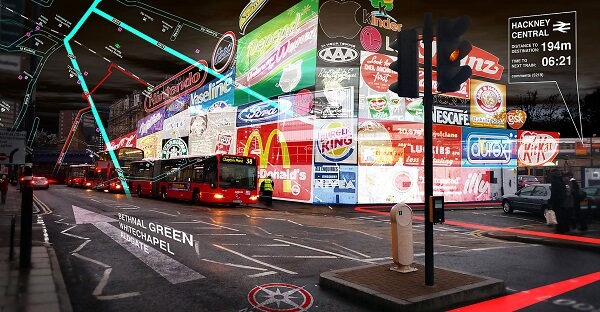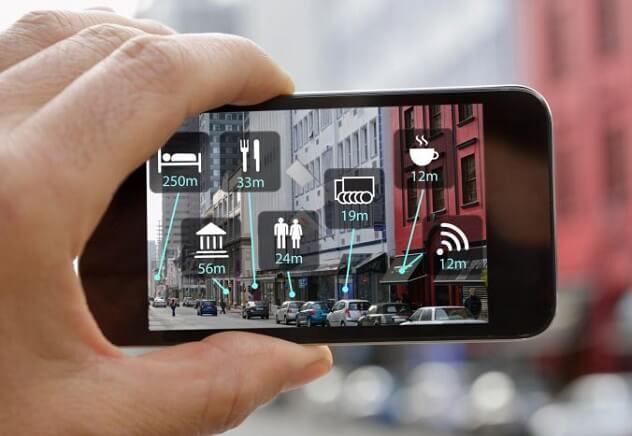Imagine a world with no buyer’s remorse. A world with no doubt; a world where the voice in the back of your head telling you that the shirt on sale will never in a million years look good on you, despite its fairly decent appearance on the online model. But then again, they are a model. You know what? Who cares? That was then, this is now. Now we’re dealing with a different world, one with augmented reality.
Enhance Reality by Augmenting It
It’s Monday morning and you wake up groggy with a loud yawn, ready to start the day. You slowly sit up, rub your eyes to get the last bit of sleep out of your system, and steady yourself as you stand and adjust to pull of gravity. One step, two steps, three steps, and you find yourself standing in front of the mirror. Hmm, will it be the dark blue button-down with the black pants, or grey pants? You know what? Let’s try both. Beep-boop-beep — your reflection suddenly disappears, only to reappear with the dark blue button-down/black pants combo overlaid on your body. Hmm, not bad. Beep-beep-boop — the pants disappear and are immediately replaced with the grey ones. Oh yeah, definitely the black.
Augmented reality (AR) transforms the world around you into an enhanced version of itself; one in which the lines between digital and physical blur, and the environment around you is overlaid with a digital interface. It’s a complementary interaction between reality and imagination. By augmenting our reality in a virtual integration, a coexistence of computer-generated elements and the real world takes place, one in which we can visualize objects in their actual size and dimensions.
Fad or fact? The Answer Lies in Utility
Is augmented reality a fad, destined to fail like the impromptu arrival and hasty departure of Google Glass, or is it here to stay as a permanent fixture that will usher a new age of technology and advancement?
The growth and gradual decline in popularity of AR applications such as Pokemon Go and Snapchat suggests that whether AR is here to stay heavily depends on its utility beyond a form of entertainment. Similar to the mirror scenario above, AR needs to actually ‘augment’ reality and enhance it; it needs to serve a purpose or fill a void. Otherwise it risks fizzling out of existence before making its much deserved splash.
Augmented Marketing with Previews
If brands want to enter the AR market, they need to understand consumers and how they interact with technology. But most importantly, they need to know where to integrate it into the customer’s journey.
Sometimes it’s best to start early; offering a preview before buying can serve to pique interest. This is what Ray-Ban is doing with the Virtual Model feature on their website and application. By uploading a quick video of yourself turning your head left and right, you’re able to get an actual glimpse of what their glasses will look like on you. Similarly, CoverGirl’s BeautyU makeup app and Sally Hansen’s ManiMatch nail polish app allow you to scan your face and nails respectively, and ‘try on’ their products before buying.
Previews aren’t limited to the person either. With that in mind, let’s talk about furniture and decor. Consider the following simplified steps you’d take for an imaginary furniture AR application:
- Take pictures of your living room, bedroom, or any room you wish to augment
- Specify the dimensions in each picture (or if the app/program does that by itself, even better)
- Complete upload of information
- Overlay furniture, decor, or any virtual element onto the real world
In the imaginary application above, you’d get a real-time preview of the furniture you’re considering purchasing before even stepping into the store. Not only will this save you time walking around and choosing the best piece to match your home decor, but it will also save any unnecessary hassle incurred if you’re not happy with your purchase once it arrives.
The furniture giant, IKEA, came out with an app a couple of years ago that contains part of their catalogue and AR functionality, similar to the imaginary application above. While IKEA’s application has a few bugs and needs some updating, it’s definitely a step in the direction we hope others will follow.

Augmented Marketing with In-Store Experiences
An in-store experience that immerses consumers into your brand or product has the same functionality as an AR preview, with the added bonus of increased ‘augmenting efficiency.’
Unlike our mirror that helps us get ready in the morning, most AR applications or devices today are tethered to smartphones for functionality, an aspect that greatly limits its abilities. In other words, with a smartphone AR application you’re limited to what the phone itself can do; an in-store AR device or feature bypasses this by virtue of being in-store.
If you like our imaginary mirror, then look no further than Topshop, who came out with an AR virtual fitting room in their flagship store in Moscow a couple of years ago that allows patrons to try on their clothes without actually physically touching them. The ‘mirror’ is efficient, saves time, and best of all, draws everyone in.
Interactive Augmented Reality Advertising

You’re walking around when you see an ad that invites you to scan it with their AR application. You’re intrigued. You pull out your phone, download their app and scan, when all of a sudden the static car bursts through the ad!
Interactive AR ads have the huge benefit of drastically increasing brand engagement. Keep in mind that this won’t necessarily make someone want to purchase your product, but as Pepsi showed us, it will help get traction with potential customers. A perfect example because everyone knows that waiting for a bus is a bore, Pepsi decided to use AR to spice things up. How? They turned a bust stop wall into a fake window to a parallel world with flying saucers, meteor strikes, tigers, and much more. Was it related to Pepsi? No, but it was downright entertaining and helped foster brand awareness and positive attitudes toward Pepsi.
The Future
All bets may be off for what’s to come with augmented reality, but Apple, a tech giant with an eye for the future, appears to be betting on its longevity. Despite keeping relatively tight-lipped on their involvement, they have been dipping their toe into the AR pond recently, and “According to some industry sources, the company may have over 1,000 engineers working on a project in Israel that could be related to AR,” says analyst Steven Milunovich. Adding fuel to the fire are speculations that they’re creating ‘digital spectacles’ that will connect to the iPhone and project content like maps and movies, and their recent acquisition of AR start-ups FlyBy Media and Metaio.
Apple aside, researchers at IDC are predicting that 2017 will see 30% of consumer-facing Global 2000 companies experimenting with AR/VR (virtual reality) as part of their marketing efforts, and others are similarly forecasting that the combined AR/VR market will hit $150 billion by 2020, with the bulk ($120 billion) going to AR.

No one knows for certain whether or not augmented reality is here to stay, but it’s safe to say that when used properly, it has the potential for great things.





Tell us your thoughts in the comments